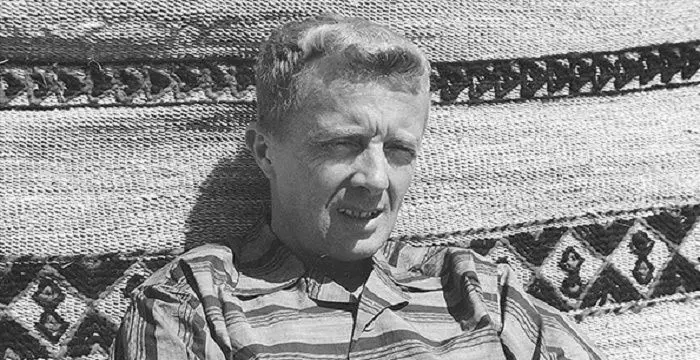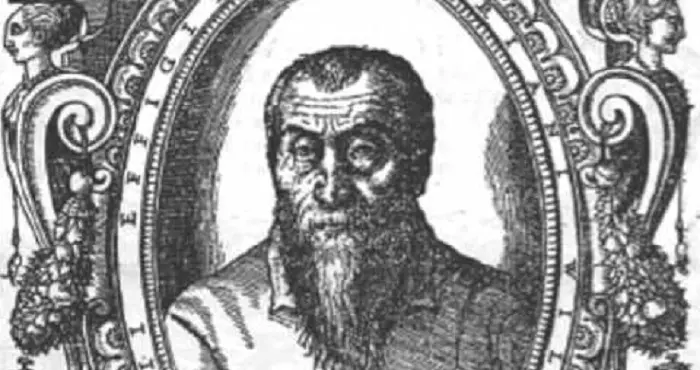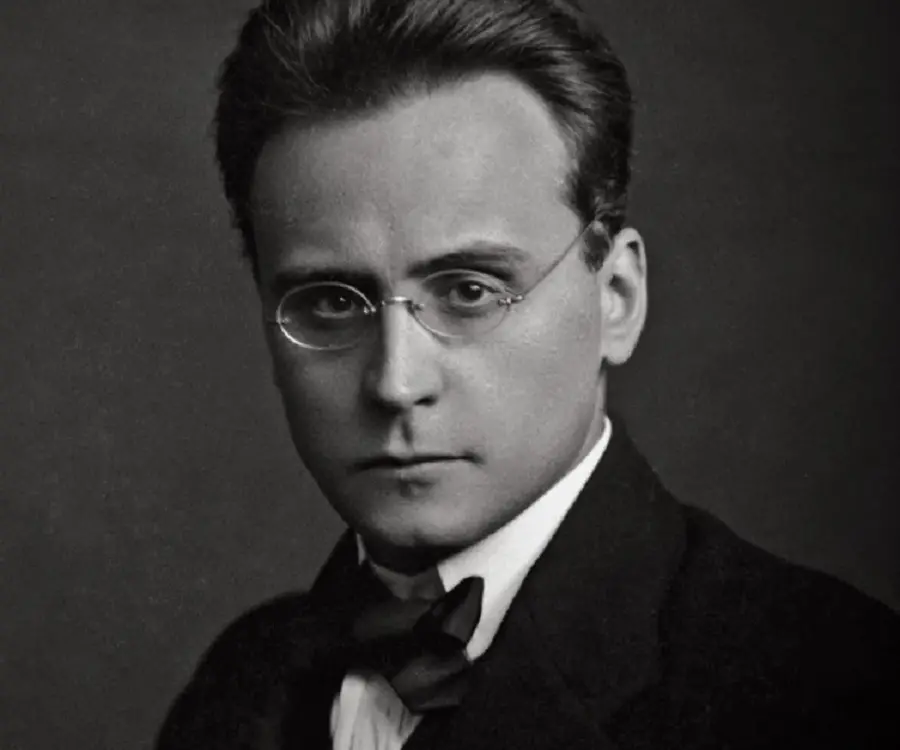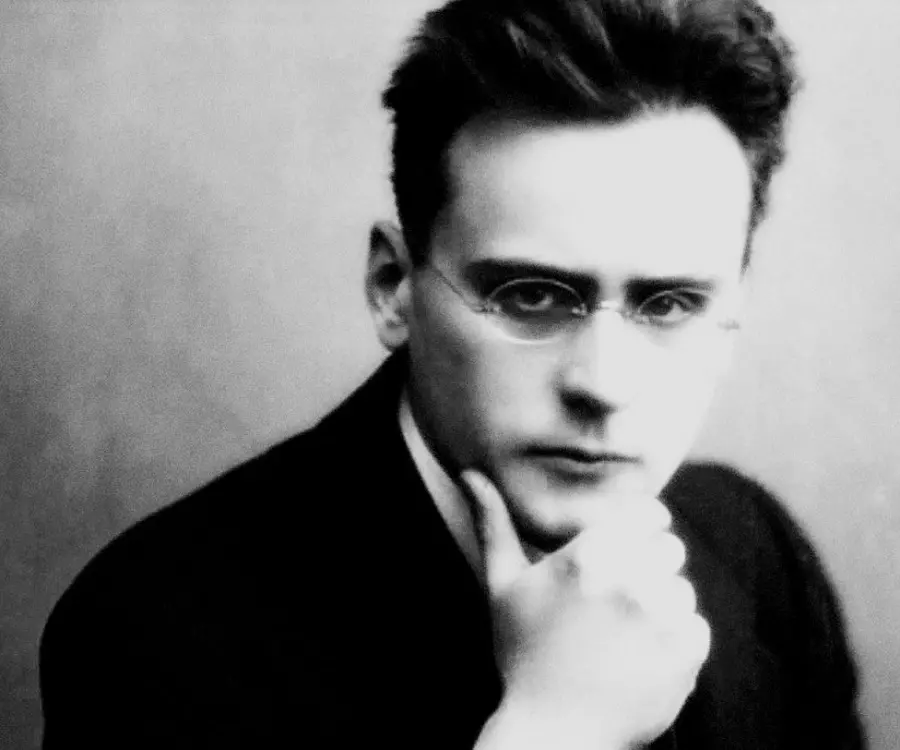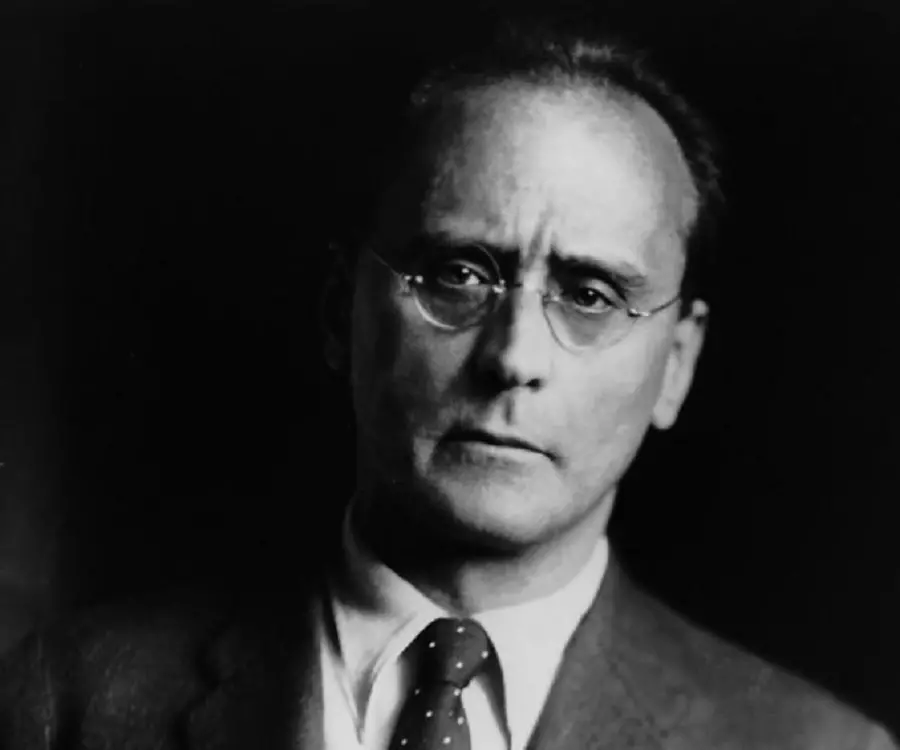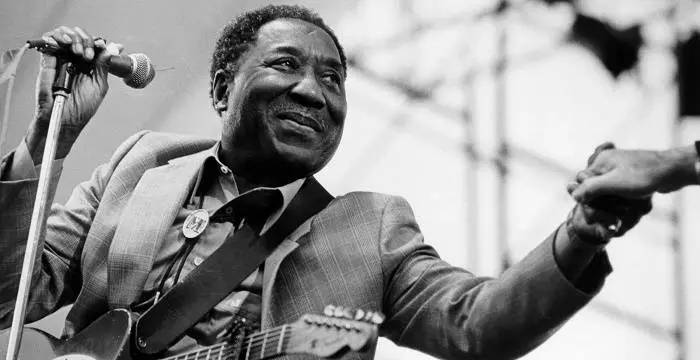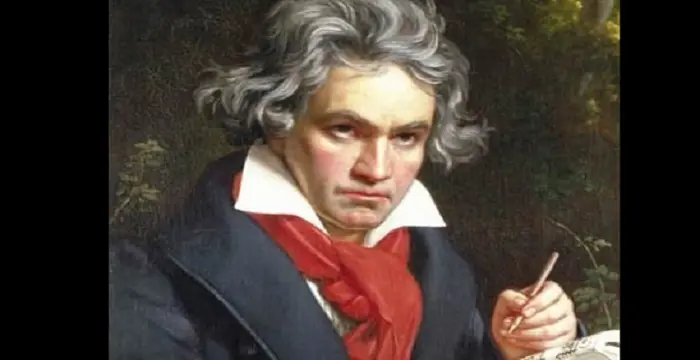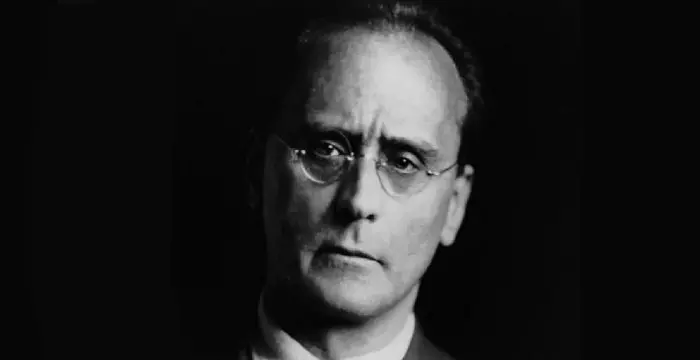
Anton Webern - Music Composer, Family and Family
Anton Webern's Personal Details
Anton Webern was a noted Austrian composer and conductor
| Information | Detail |
|---|---|
| Birthday | December 3, 1883 |
| Died on | September 15, 1945 |
| Nationality | Austrian |
| Famous | Musicians, Composers, Music Composer |
| Spouses | Wilhelmine Mörtl |
| Childrens | Amalie Webern |
| Universities |
|
| Birth Place | Vienna, Austria |
| Gender | Male |
| Father | Carl von Webern |
| Mother | Amelie Geer |
| Sun Sign | Sagittarius |
| Born in | Vienna, Austria |
| Famous as | Music Composer |
| Died at Age | 61 |
// Famous Music Composer
Hans Zimmer
Hans Zimmer is a German film composer and record producer. This biography profiles his childhood, family, personal life, music career, achievements, and some interesting facts
Paul Bowles
Paul Bowles was an American writer, music composer, poet, translator and novelist. Check out this biography to know about his childhood, life, achievements, works & timeline.
Adrian Willaert
Adrian Willaert was a renowned Netherlandish composer of the Renaissance era and one of the most influential composers of the period. Check out this biography to know about his childhood, family life, achievements and other facts related to his life.
Anton Webern's photo
Who is Anton Webern?
Anton Webern, the noted Austrian composer and conductor, remembered both for his atonal and serial works, was one of the key figures in the Second Viennese School. He started learning to play the piano from his mother, at the age of five. At fourteen, he began his formal training in music and wrote his first composition at the age of sixteen. After graduating from the gymnasium, he entered Musicological Institute at the University of Vienna. Concurrently, he also started studying composition with Arnold Schoenberg, beginning his experiments in music under his master’s guidance. At the age of 24, after four years of study with Schoenberg, he embarked on his career as a conductor and composer. Unfortunately, with the rise of Nazis, his music was banned and he spent the last decade of his life in financial constraint and musical isolation. He was not very prolific composer, publishing only 31 works during his lifetime. Although some other works were discovered later on they were not great in numbers. Yet, he left a great impression with his radical compositions, influencing both his contemporaries and younger generations of musicians.
// Famous Musicians
Ted Nugent
Ted Nugent is a hard rock musician known for his hits ‘Stranglehold’ and ‘Cat Scratch Fever’. This biography of Ted Nugent provides detailed information about his childhood, life, achievements, works & timeline.
Muddy Waters
Muddy Waters was a blues musician referred to as the 'father of modern Chicago blues.' Check out this biography to know about his childhood, family life, achievements and fun facts about him.
Travis Bacon
Travis Bacon is an American musician and actor, better known as the son of veteran actors Kevin Bacon and Kyra Sedgwick. Find more about his family, birthday, etc.
Childhood & Early Life
Anton Webern was born on 3 December 1883, in Vienna, Austria. Named Anton Friedrich Wilhelm von Webern at birth, he never used his middle names and later gave up ‘von’ to comply with the 1919 reforms of the Austrian government.
His father, Carl von Webern, was a mining engineer employed with the Habsburg government. He later reached the rank of chief of mining, the highest rank in his profession. His mother, Amelie (née Geer) Webern, was a competent pianist and accomplished singer.
Anton was born fourth of his parents’ five children, having two surviving sisters, named Rosa and Maria. His other two siblings, a brother and a sister, died in infancy.
Growing up in a musical environment, Anton began his education at Vienna, where the family lived until 1889. It was also at Vienna that he began his music lesson under his mother. at the age of five.
In 1890, his father was transferred to Graz and another four years later to Klagenfurt. At Klagenfurt, Anton attended Klagenfurt Humanistisches Gymnasium, studying traditional courses in humanities. By then, his musical talent must have started blooming for the school records show that he got high grades in music.
Sometime during his stay in Klagenfurt, he began studying the works of Peter Rosegger, which greatly influenced him. More important to him was the long retreats at their family estate, the Preglhof, a 500 acre property surrounded by soft and gentle mountains near Austria’s border with Slovenia.
Until the age of 18, he spent most of his holidays at the Preglhof, enjoying nature in the company of his sisters and cousins. It soon became the centre of his ‘heimat’, giving him a sense of belonging, having great influence on his creativity.
In 1897, while still residing at Klagenfurt, Anton began his formal education in music; learning cello, piano, counterpoint and rudimentary musical theory with Dr. Edwin Komauer, shortly inheriting his master’s enthusiasm for Wagner, Mahler and Wolf. This was also the time he began playing cello at the local orchestra.
In 1899, he started composing music, writing two pieces for cello and piano. He also wrote several songs such as the ‘Vorfruhling’ during this period, noting them down in notebooks and then making copies of the same work, presumably one for the pianist and the other for the singer.
In a notebook entry dated 1901, we find him listing four songs as opus 1. It is possible that he planned to publish these works; but that did not happen just then. These notebooks, nine in number, also reveal that by 1900, he had started attending concerts on regular basis.
At University of Vienna
In 1902, Anton Webern graduated from Klagenfurt Humanistisches Gymnasium. He celebrated the event by attending Bayreuth Festival, hearing Richard Wagner's operas. They left a deep impression on his young mind.
In the autumn of 1902, he entered the Musicological Institute at the University of Vienna with musicology and composition, studying musicology with Guido Adler, harmony with Herman Graedener and counterpoint with Karl Navratil. All along, he continued to write, though at a much slower rate.
In 1903, he picked up the pace, writing twelve songs until 1904. During this period, he realized that he needed a true composition teacher and thought of studying with Hans Pfitzner in Berlin. But when it failed to materialize he decided on Arnold Schoenberg, who had just moved to Vienna.
From the autumn of 1904, Webern began to study privately with Arnold Schoenberg. Just before he joined the master, he wrote his first large orchestra, ‘Im Sommerwind’. Until then, he had mostly written short songs for voice and piano. The few orchestras he had created until then were very small.
At Schoenberg’s class, Webern met and subsequently became friend with Alban Berg. Under the guidance of Schoenberg, Webern and Berg began to experiment with music, eventually leading to the development of atonality and the ‘Second Viennese School’.
Along with studying with Schoenberg, Webern started working on his doctoral degree, writing his thesis on Heinrich Isaac’s ‘Choralis Constantinus', earning his PhD in 1906. However, he continued his study with Schoenberg until 1908.
By 1908, he had number of well-known works to his credit. Under Schoenberg’s guidance he wrote five songs based on the poems of Richard Dehmel, fourteen songs to text by Stefan George, several string quarters, the orchestral ‘Passacaglia Op 1’ (1908), and the choral canon ‘Entflieht auf leichten Kähnen’ (1908).
Career
In 1908, Anton Webern began his career as conductor at a theatre in Bad Ischi, Austria. He was not very successful in his first venture because he hated routines, a prerequisite for theatre work, preferring to focus on free creative work.
From Ischi, he first moved to Teplitz (Teplice) and then to Danzig (Gdańsk) and finally to Stettin (Szczecin), conducting at theatres, until he joined the Austrian Army in 1915. Although he failed to make his mark as a conductor during this period, he now began to bloom as a composer.
Some of his most notable compositions of this period were ‘Five Movements for String Quartet’ (1909), ‘Six Pieces for Orchestra’ (1909), ‘Four Pieces for Violin and Piano’(1910), ‘Two Songs, Opus 8’ (1910), ‘Six Bagatelles for String Quartet’ (1911–13), ‘Five Pieces for Orchestra’ (1911–13), and ‘Three Small Pieces for Cello and Piano’ (1914).
These works, written between 1909 and early 1914, highlights a growing tendency to squeeze in highest intensity into very short space. But ‘The Cello Sonata’, written in the later part of 1914, shows that he was slowly returning to a more expanded form.
In 1915, Webern joined the Austrian Army; but was discharged by the end of 1916 because of his poor eyesight. In 1917, he moved to Prague, where he found employment as a conductor at the Deutsches Theater, remaining there until he returned to Vienna in 1918.
The period had been equally productive for Webern, composing ‘Four Songs, Opus 12’ (1915–17) and ‘Opus 13’ (1914–18). In 1917, he also started working on his ‘Six Songs’, ‘Five Scared Songs’; but they would take few more years to complete.
On returning to Vienna, he settled down in Mödling, a small town located southwest to the city. To earn his living, he now began to take up private students. Also from 1908 to 1922, he supervised the programs of Schoenberg’s organization, Verein für Musikalische Privataufführungen (Society for Private Musical Performances).
From 1921, he started taking up various assignments, being employed as a conductor at the Schubertbund and the Mödling Male Chorus. He also led the Vienna Workers' Symphony concerts from 1922 to 1934 and the Vienna Workers' Chorus from 1923 to 1934
In 1924, Schoenberg formulated his 12-tone method, opening up endless opportunities in composition. In the same year or possibly in 1925, Webern composed ‘Kinderstück’ for piano, using this technique, developing it into its fullest potential in his future works.
In 1926, Anton Webern had to resign from Mödling Male Chorus for hiring a Jewish singer, Greta Wilheim. In the following year, he became a conductor on the Austrian Radio, holding the position till 1938. This was also the period when he started taking international tours, visiting Germany, Switzerland and Spain.
Continuing to create music, he wrote ‘String Trio’ in 1927, ‘Symphony’ in 1928 and ‘Quartet for Violin, Clarinet, Tenor Saxophone, and Piano’ in 1930. Meanwhile from 1929, he made several trips to England, becoming a guest conductor with the BBC Symphony Orchestra
In spite of his travels abroad, Anton Webern’s main vocation remained composition, private teaching, and lecturing. In early 1930s, he wrote number of celebrated works, such as ‘Three Songs, Opus 23’ (1933–34), ‘Concerto for 9 Instruments’ (1934), ‘Three Songs, Opus 25’ (1934), ‘Das Augenlicht’ (1935), ‘Piano Variations’ (1935–36) etc.
Nazi Years
In 1933, Anton Webern was mistakenly branded as a Jewish composer on Bayerischer Rundfunk, a private broadcaster based in Munich. Shortly thereafter the Nazi government also banned the performance of the music by ‘Second Vienna School’. Webern was no more employable as a conductor, and had to depend upon private teaching for sustenance.
His economic condition became worse with the Nazi annexation of Austria in 1938. He was now forced to make piano arrangements for lesser composers, having no fixed income until 1940. After 1941, he became an editor and proofreader for Universal Edition. Yet, he continued creating music.
In 1935, he wrote ‘Ricercata’ from Johann Sebastian Bach’s Musical Offering of 1747. ‘String Quartet’ (1937–38), ‘Cantata No. 1’ (1938–39)’, ‘Variations Op 30’ (1940) ‘Cantata No. 2’ (1941–43) etc were some of his celebrated works of this period.
In spite of hardships and musical isolation, Webern still retained few friends. One of them was Swiss philanthropist Werner Reinhart, who arranged for him to attend the premiere of his ‘Variations for Orchestra, op. 30’ in Winterthur, Switzerland in 1943. This was the last big musical event in his career.
Major Works
Today, Anton Webern is best remembered as an exponent of atonality and twelve-tone technique. Although it was discovered by his master A. Schoenberg Webern’s innovations took it to higher level. He also played an active role in the creation of, what later became known as the ‘Second Viennese School’.
Awards & Achievements
Anton Webern twice received the Vienna Music Prize; first in 1924 and next in 1932.
Personal Life & Legacy
In 1911, Anton Webern married his first cousin, Wilhelmine Mörtl, his mother’s sister’s daughter. However, the marriage could not be solemnized before 1915 because the union between first cousins was prohibited by the Roman Catholic Church. The couple had four children; three daughters and a son named Peter.
In February 1945, Peter was killed while the train he was traveling in was bombed in a strafing attack. Later in the same year, as the Russian Army was about to capture Vienna, Webern and his wife fled to Mittersill near Salzburg. His three daughters, sons-in-law and grandchildren were already living there.
On the evening of 15 September 1945, forty-five minutes before the curfew was to go into effect, Webern stepped out of his house in Mittersill to smoke a cigar, presented by his son-in-law. As he came out, he was mistakenly shot and killed by a soldier of the allied force.
After his death, his works began to gain in popularity. From the beginning of 1950s, his works began to be hailed as the cornerstone of modern music both by younger generation of musicians like Pierre Boulez and Karlheinz Stockhausen and acknowledged masters like Igor Stravinsky.
Trivia
Pfc. Raymond Norwood Bell of North Carolina, who had accidentally killed Webern, was later overcome with remorse. In 1955, he died of alcoholism.
// Famous Composers
Ludwig van Beethoven
Ludwig Van Beethoven was one of the greatest composers the world has ever had. Check out this biography to know about his childhood, family life, and achievements.
Emina Jahović
Emina Jahović Sandal is a Serbian model, actress and singer-songwriter. Know more about her childhood, life, career, achievements and timeline in this biography.
John Denver
John Denver, a famous American singer-songwriter and activist, is remembered for songs like Take Me Home, Country Roads and Annie's Song. To know more about his childhood, career, profile and timeline read on
Anton Webern biography timelines
- // 3rd Dec 1883 To 1919Anton Webern was born on 3 December 1883, in Vienna, Austria. Named Anton Friedrich Wilhelm von Webern at birth, he never used his middle names and later gave up ‘von’ to comply with the 1919 reforms of the Austrian government.
- // 1889Growing up in a musical environment, Anton began his education at Vienna, where the family lived until 1889. It was also at Vienna that he began his music lesson under his mother. at the age of five.
- // 1890In 1890, his father was transferred to Graz and another four years later to Klagenfurt. At Klagenfurt, Anton attended Klagenfurt Humanistisches Gymnasium, studying traditional courses in humanities. By then, his musical talent must have started blooming for the school records show that he got high grades in music.
- // 1897In 1897, while still residing at Klagenfurt, Anton began his formal education in music; learning cello, piano, counterpoint and rudimentary musical theory with Dr. Edwin Komauer, shortly inheriting his master’s enthusiasm for Wagner, Mahler and Wolf. This was also the time he began playing cello at the local orchestra.
- // 1899In 1899, he started composing music, writing two pieces for cello and piano. He also wrote several songs such as the ‘Vorfruhling’ during this period, noting them down in notebooks and then making copies of the same work, presumably one for the pianist and the other for the singer.
- // 1900 To 1901In a notebook entry dated 1901, we find him listing four songs as opus 1. It is possible that he planned to publish these works; but that did not happen just then. These notebooks, nine in number, also reveal that by 1900, he had started attending concerts on regular basis.
- // 1902In 1902, Anton Webern graduated from Klagenfurt Humanistisches Gymnasium. He celebrated the event by attending Bayreuth Festival, hearing Richard Wagner's operas. They left a deep impression on his young mind.
- // 1902In the autumn of 1902, he entered the Musicological Institute at the University of Vienna with musicology and composition, studying musicology with Guido Adler, harmony with Herman Graedener and counterpoint with Karl Navratil. All along, he continued to write, though at a much slower rate.
- // 1903 To 1904In 1903, he picked up the pace, writing twelve songs until 1904. During this period, he realized that he needed a true composition teacher and thought of studying with Hans Pfitzner in Berlin. But when it failed to materialize he decided on Arnold Schoenberg, who had just moved to Vienna.
- // 1904From the autumn of 1904, Webern began to study privately with Arnold Schoenberg. Just before he joined the master, he wrote his first large orchestra, ‘Im Sommerwind’. Until then, he had mostly written short songs for voice and piano. The few orchestras he had created until then were very small.
- // 1906 To 1908Along with studying with Schoenberg, Webern started working on his doctoral degree, writing his thesis on Heinrich Isaac’s ‘Choralis Constantinus', earning his PhD in 1906. However, he continued his study with Schoenberg until 1908.
- // 1908In 1908, Anton Webern began his career as conductor at a theatre in Bad Ischi, Austria. He was not very successful in his first venture because he hated routines, a prerequisite for theatre work, preferring to focus on free creative work.
- // 1908 To 1922On returning to Vienna, he settled down in Mödling, a small town located southwest to the city. To earn his living, he now began to take up private students. Also from 1908 to 1922, he supervised the programs of Schoenberg’s organization, Verein für Musikalische Privataufführungen (Society for Private Musical Performances).
- // 1911 To 1915In 1911, Anton Webern married his first cousin, Wilhelmine Mörtl, his mother’s sister’s daughter. However, the marriage could not be solemnized before 1915 because the union between first cousins was prohibited by the Roman Catholic Church. The couple had four children; three daughters and a son named Peter.
- // 1915From Ischi, he first moved to Teplitz (Teplice) and then to Danzig (Gdańsk) and finally to Stettin (Szczecin), conducting at theatres, until he joined the Austrian Army in 1915. Although he failed to make his mark as a conductor during this period, he now began to bloom as a composer.
- // 1924 To 1925In 1924, Schoenberg formulated his 12-tone method, opening up endless opportunities in composition. In the same year or possibly in 1925, Webern composed ‘Kinderstück’ for piano, using this technique, developing it into its fullest potential in his future works.
- // 1924 To 1932Anton Webern twice received the Vienna Music Prize; first in 1924 and next in 1932.
- // 1926 To 1938In 1926, Anton Webern had to resign from Mödling Male Chorus for hiring a Jewish singer, Greta Wilheim. In the following year, he became a conductor on the Austrian Radio, holding the position till 1938. This was also the period when he started taking international tours, visiting Germany, Switzerland and Spain.
- // 1933In 1933, Anton Webern was mistakenly branded as a Jewish composer on Bayerischer Rundfunk, a private broadcaster based in Munich. Shortly thereafter the Nazi government also banned the performance of the music by ‘Second Vienna School’. Webern was no more employable as a conductor, and had to depend upon private teaching for sustenance.
- // 1943In spite of hardships and musical isolation, Webern still retained few friends. One of them was Swiss philanthropist Werner Reinhart, who arranged for him to attend the premiere of his ‘Variations for Orchestra, op. 30’ in Winterthur, Switzerland in 1943. This was the last big musical event in his career.
- // Feb 1945In February 1945, Peter was killed while the train he was traveling in was bombed in a strafing attack. Later in the same year, as the Russian Army was about to capture Vienna, Webern and his wife fled to Mittersill near Salzburg. His three daughters, sons-in-law and grandchildren were already living there.
- // 15th Sep 1945On the evening of 15 September 1945, forty-five minutes before the curfew was to go into effect, Webern stepped out of his house in Mittersill to smoke a cigar, presented by his son-in-law. As he came out, he was mistakenly shot and killed by a soldier of the allied force.
- // 1955Pfc. Raymond Norwood Bell of North Carolina, who had accidentally killed Webern, was later overcome with remorse. In 1955, he died of alcoholism.
// Famous Sagittarius Celebrities peoples
Billie Eilish
Billie Eilish Pirate Baird O’Connell is an American singer and songwriter. Check out this biography to know about her childhood, family, personal life, birthday, etc.
Jacelyn Reeves
Jacelyn Reeves is a former flight attendant who once had a fling with Clint Eastwood. Check out this biography to know about her birthday, childhood, family life, achievements and fun facts about her.
Edmund Kemper
Edmund Kemper is a convicted serial killer from America who murdered ten people. Check out this biography to know about his childhood, life, crimes and other facts about him.
Pietro Boselli
Pietro Boselli is an Italian model, engineer, teacher, and fitness athlete who became famous as the ‘world’s sexiest math teacher’. Check out this biography to know about his birthday, childhood, family life, achievements and fun facts about him.
Niqoles Heard
Lil Niqo is an American rapper and musical artist. Let’s take a look at his family and personal life including age, date of birth, net worth, girlfriends, and fun facts.
Ted Nugent
Ted Nugent is a hard rock musician known for his hits ‘Stranglehold’ and ‘Cat Scratch Fever’. This biography of Ted Nugent provides detailed information about his childhood, life, achievements, works & timeline.
Anton Webern's FAQ
What is Anton Webern birthday?
Anton Webern was born at 1883-12-03
When was Anton Webern died?
Anton Webern was died at 1945-09-15
Where was Anton Webern died?
Anton Webern was died in Mittersill
Which age was Anton Webern died?
Anton Webern was died at age 61
Where is Anton Webern's birth place?
Anton Webern was born in Vienna, Austria
What is Anton Webern nationalities?
Anton Webern's nationalities is Austrian
Who is Anton Webern spouses?
Anton Webern's spouses is Wilhelmine Mörtl
Who is Anton Webern childrens?
Anton Webern's childrens is Amalie Webern
What was Anton Webern universities?
Anton Webern studied at Klagenfurt Humanistisches Gymnasium (1902), PhD Musicology, University of Vienna (1906)
Who is Anton Webern's father?
Anton Webern's father is Carl von Webern
Who is Anton Webern's mother?
Anton Webern's mother is Amelie Geer
What is Anton Webern's sun sign?
Anton Webern is Sagittarius
How famous is Anton Webern?
Anton Webern is famouse as Music Composer

